Why do you need a bandage for trees and how to use it correctly
Garden trees can easily be damaged by sunlight, severe frost, insects and rodents, and fungus.
The traditional method of protection is whitewashing the lower part of the trunk. However, there are more effective remedies. One of them is a bandage for trees. It can be purchased at any gardening store.
What is a garden bandage and why is it needed for trees
Bandage for garden trees - This is a product that is designed to protect plants from various adverse factors that often occur in the garden. These include:
- exposure to ultraviolet radiation, which is part of the sunlight, which leads to burns;
- damage to the bark underneath due to severe frosts;
- injury to trees by pests and rodents.
Also, the tool is used for faster recovery of already damaged plants.
What does it look like
Garden bandage is a fabric or polymer base impregnated with substances useful for garden trees. It can be used as:
- gauze;
- lightweight cotton fabric;
- breathable cellophane;
- other materials.
Composition and properties
The composition of the product depends on the manufacturer and purpose. The simplest options are propylene film without additional additives, which does not allow sunlight to pass through and can retain heat. More complex products contain various nutrients, as well as compounds that contribute to the rapid regeneration of plant tissues. The most commonly used are the following.
- Wax and rosin. These plastic substances create a thin film layer over the damaged areas, thereby preventing pathogens and fungus from entering there.
- Natural oils of vegetable origin (linseed, rapeseed). Moisturize excessively dry bark.
- Turpentine. Performs a function similar to oils. Also kills some pathogens.
- Antifungal and antimicrobial agents. Do not allow unfavorable microflora to get on the surface of the plant, which can lead to diseases.
Also, the composition may include nutrients that the tree absorbs with the help of the upper layer of bark cells, chemical compounds that can scare off pests.
In general, the composition of the bandage for trees repeats the composition of the garden var. The only difference is that the var is liquid and is applied with a brush, and the bandage has a fabric or polymer base.
Views
Depending on the purpose, the following types of garden bandage are distinguished.
- Against ultraviolet radiation. Performs the function of protecting plants from direct sunlight. Made of polymer material that does not transmit or almost does not transmit ultraviolet light. Most often, polypropylene comes into its role.
- Against frost. The main task of this type of bandage is to protect trees from severe frosts, keeping the bark warm. It is made of polymer materials that prevent hypothermia.
- Revitalizing. Designed for faster healing of damage caused by pests or humans.
- Against pests. It repels insect pests and rodent animals. Contains substances that they cannot smell.
- Universal. Performs several of the above functions at once.
How to use a garden bandage correctly
To use a garden bandage, you must:
- measure and cut off the required amount of material;
- wind it around a tree in the right place;
- secure the beginning and end of the winding with a thin wire, electrical tape, tape or twine.
If the agent is used to protect the tree from frost, it is wound in two or three layers. Winding can be done anywhere (including on thin branches).
Where to buy and how much does it cost
The bandage is sold at gardening stores. It is also available to order online. Its cost depends on:
- length;
- composition.
On average, it ranges from 100 to 500 rubles. But if you wish, you can find a remedy at a lower price - only 40-50 rubles.
What can be replaced
You can change the bandage:
- garden pitch;
- putty;
- self-made winding;
- whitewash.
Let's consider each of the methods in more detail.
Garden var
To make a var, you need the following ingredients:
- rosin (400 gr);
- ethyl alcohol 90% (50 ml);
- wax (200 gr);
- mutton fat (100 gr).
Lamb fat can be replaced with vegetable oil. Linseed is best, but if not available, you can use sunflower. Alcohol can be replaced with turpentine. This will give the bold restorative properties.
Rosin, wax and fat are placed in a bowl and heated over low heat until they melt and turn into a homogeneous mass. She is allowed to cool slightly and alcohol is poured in. The composition is then allowed to cool to room temperature. The result is a thick paste that is applied to damaged areas of tree bark.
It scares off rodents well, as they are afraid of the smell of rosin. For a better fight against these animals, you can add a little naphthalene to the mixture - animals also do not tolerate its smell.
Putty
Putty is made by adding a small amount of clay or sand to the pitch. This makes the mixture thicker. When solidified, it forms a hard crust. The putty has protective properties. Suitable for UV protection. It does not protect very well from frost, since it does not retain heat well.
Winding
The closest option to a bandage is a winding. For it, you can use pieces of fabric, gauze or thick paper, pre-soaked with garden varnish.
If the barrel is wrapped to protect it from frost, the material does not need to be impregnated. In this case, it is better to give preference to thicker fabrics that retain heat well (for example, felt). Dry hay can be placed under the wrapping. Such protection will well keep the bark from frost and will not allow it to crack, and will also prevent rodents from reaching the trunk.
Whitewash
This is a traditional option that was previously commonly used in place of a bandage. It will not protect from the cold weather, but from the sun's rays, insect pests and will save rodents.
For whitewashing, a thick solution of slaked lime is prepared, and then it is applied to trees in vulnerable places. To avoid burns, lime can be diluted in half with crushed chalk.
Reviews
- I decided not to use frost-proof rags in the garden, bought four packs of bandage. It costs only 50 rubles, so in total I spent two hundred. One roll - 10 meters. This was enough for me to wrap the lower part of the young apple trees, and there is still left. The material is thin, but the trees have wintered well. The trunk is not frozen, the bark is not cracked. In general, nothing worse than those winters when I wrapped old coats around the plants. I am satisfied.
Egor, Kazan
- In the spring, the apple trees are gnawing at me, either mice or others. Anything I tried, nothing helps. Because of this, three apple trees died, and one is very young. And now a friend advised a special bandage that repels pests. I wrapped the plants, and a miracle happened - not a single one was gnawed. Next year I will also arrange such protection.
Valentina, Tver region
The Garden Tree Bandage is a versatile product designed to protect and heal trees.It helps protect them from ultraviolet radiation, frost and rodents, and quickly heal damage. You can buy a bandage at the store. You can also make it yourself.
Experienced gardener on the application of the garden bandage:



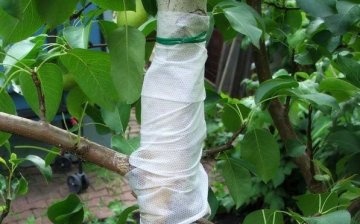
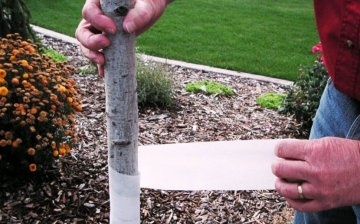
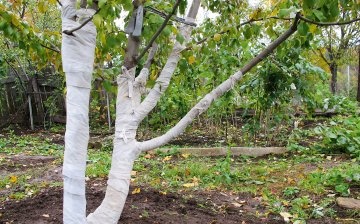
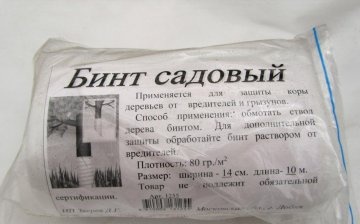




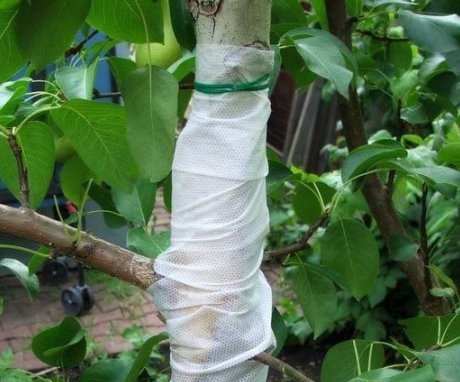
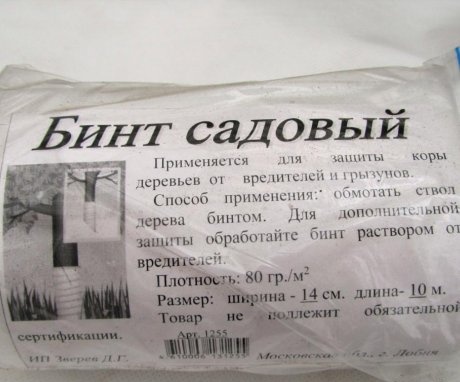
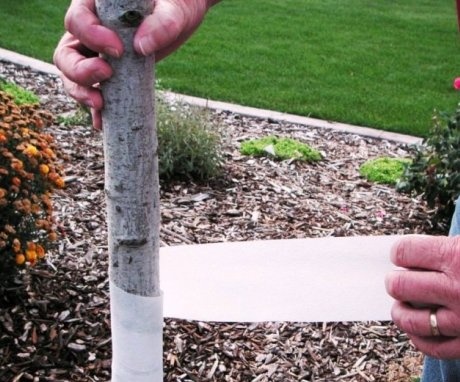
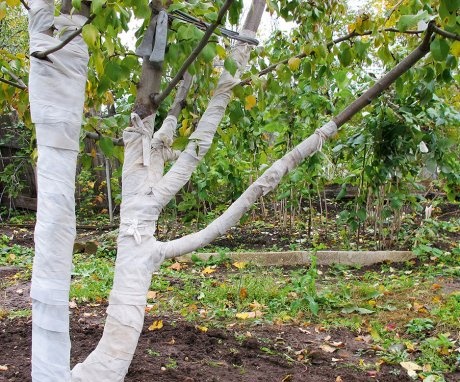
The eternal problem is to ward off mice eating everything. Hares, okay, they at least gnaw the upper branches, and the mice have already ruined so many apple trees for us, eating the bark on the trunks .... I'll have to think about maybe really using a bandage.
I have never used a garden bandage before, but it turns out - it is a universal remedy for protecting trees in the garden. I think, get a universal bandage so that it scares away pests, from ultraviolet radiation, and protects from frost, and helps to heal damage on the tree.